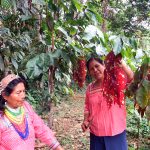From traditional to professional delivery
Reproduction has been the obligatory destination of the majority of women in all populations, and the attention of their reproductive life has been in the hands of midwives for at least 200,000 years since the appearance of our species. During that long period of time, the characteristics of the reproductive anatomy and the physiological process of human birth have not changed.
In the last decades of the nineteenth century European countries developed health, social and technical policies to reduce the high rates of maternal mortality, (then, around 600 per hundred thousand births), getting to 1930 rates of 70 per hundred thousand. These is the goal to reach in 2030 by the less favoured countries, according to objective 3.1 (ODS3) of the Sustainable Development Goals 2030.
In these countries, programs to reduce maternal mortality began in the 60s and 70s of the 20th century, as their difficult decolonization processes were completed. A main objective was to train traditional birth attendants and incorporate them transitionally into the emerging national health systems, while establishing intermediate and higher qualifications to train professional midwives. Recent evaluations of these processes show important global advances in many countries that, nevertheless, maintain great differences between their rural and urban populations, between population sectors with different income levels, and between indigenous and non-indigenous populations.
Between 2006 and 2014 in the whole of the African region only 54% of births were attended by professional midwives, compared to 99% of the European region.
Professional midwifery is defined as health services and health personnel with resources and qualified training for women's sexual and reproductive care. The World Health Organization (WHO) recognizes the key role of these midwives and their professional skills to contribute to the achievement of the 2030 Sustainable Development Goals and to be able to satisfy 87% of the services dedicated to sexual and reproductive health. However, the reality of many rural, indigenous, poor and isolated populations is that traditional birth attendants still represent the main real support for maternal and child health.
Review and compare specific aspects of traditional midwifery in different populations and their rate of temporal transformation (where birth occurs, who attends it, how it is handled, what remedies are used, etc.) provides essential information to understand: its persistence in our species for at least 8,000 generations, the reasons that explain the inequalities identified, and some keys to achieve the successful integration of traditional health systems in modern healthcare in multicultural countries.






































